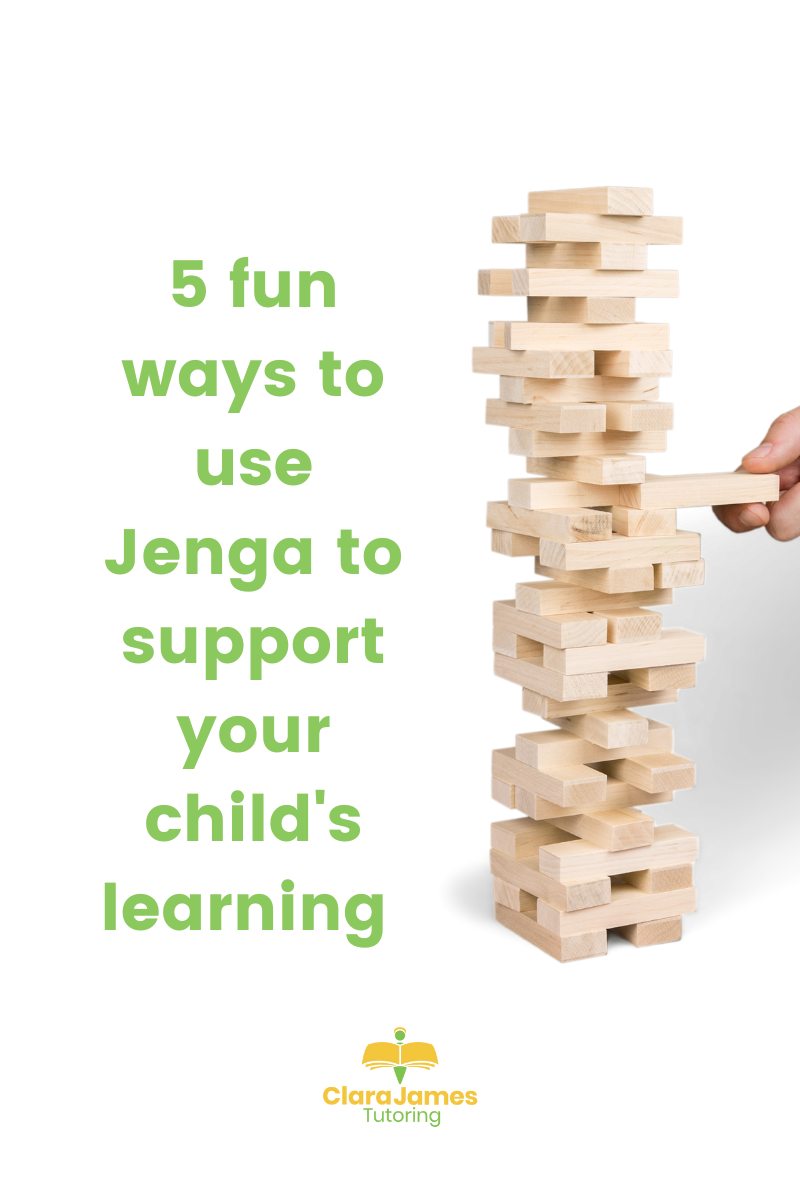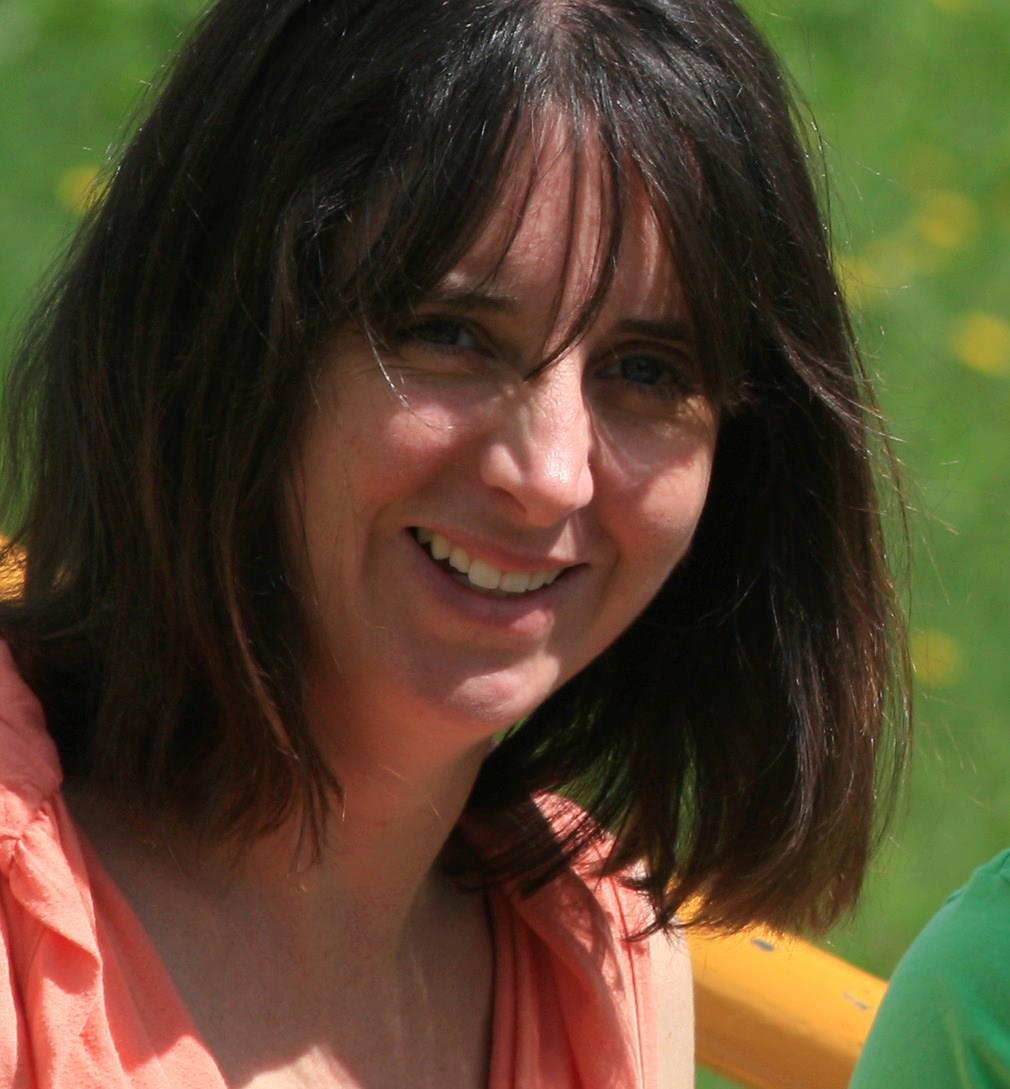Clara James Tutoring
BLOG POSTS

5 ways to use to Jenga to support your child's learning
“The more children get involved the better they become, then the more they will want to participate. With participation comes practice and practice brings improvement. It’s a positive spiral to success.” - Dawn Strachan
Jenga, a great way to support your child's education:
Jenga is a game that has been enjoyed for generations. The concentration. The rise and fall of emotions. The rise and fall of the tower. In its basic format it is a fantastic game to play for fun. However, it also supports concentration and fine motor skills. These fine-motor skills are partly responsible for a child’s handwriting. But with a bit of tweak, Jenga can be used as a fun way to support your child’s learning in other areas as well.
Below are 5 of my favourite examples:

With that said, here are 5 reasons why Jenga can be used to support your child's learning:
Each of these games are played in the conventional way. You build the tower and take it in turns to remove a brick. The person who removes the brick causing it to tumble... looses.
1. Times Tables
Before you begin, there are 2 things you will need to do. Firstly, write a number from 1 to 12 on each brick. (Unless you are looking for a greater challenge) but start simple and get harder as your child’s confidence grows. Done. That is the preparation completed. Now, pick what number you want to multiply by.
Let’s imagine you chose to practice/ multiply by 5.
You remove the first brick and there is a number 8 written on there. Read out the question: 5x8 and offer your answer, 40.
If the child is wrong, just ask them if they are sure of their answer. If they say “yes” ask them if they’re positive. Sometimes at this stage if they say yes again, you need to double check your answer and eat humble pie. If they are wrong, they will probably realise that by this point, double check their answer and give you the correct one.
Praise them and the next person has a turn.
Sometimes you will get a run of repeated questions. Don’t worry as the repetition will help them to recall the information later, when the question comes around again.
Good luck may the best person win!
2. Recognising the high frequency words (HFW)
These are the 100 most commonly used words in any written piece of writing. They include words such as: the, and, a, to.
This time you will write one of the words on each brick. (They can easily be found on Google if you are not sure what they are). As you remove the brick, ask your child to read the word written there. You may ask them to write it, you will obviously do the same, to help reinforce it in their mind. It very much depends on whether you are practicing reading/ recognising the words or writing and spelling the words. You may decide to read, then spell the word out loud. The choice is yours to decide.
3. Punctuation
I was working with a lad the other day and the mum, almost fearfully, asked she could ask me a question. Would I be willing to help her son with punctuation? The cry of pain that came from her son well explained her trepidation!
We had played Jenga before when working on the times tables, so I knew it was a game that he enjoyed.
This offered me a simple solution. On each brick I placed a different form of punctuation: full-stops, question marks, exclamation marks, commas, etc. Each time a brick is pulled out you write a sentence using that piece of punctuation. Simple and he loved it.
4. Grammatical terminology
This is a version I often use with older students. In this adaptation I write a grammatical term on each brick. I took a list from the back of the English Language GCSE CPG book. Otherwise, you could use terms that your child has brought home from school previously or lists for different age groups can be found online by simply googling it.
You can mix the game up by asking for a definition, or by giving an example. I always think it is better if you participate and try and think of the definition/ examples as well to make it more of a dual-purpose tournament, rather than just “a test of their knowledge.”
There could well be some that neither of you are familiar with. That’s fine, learn together! It’s ok to admit that nobody knows everything. Sometimes they will guide you. Other times you will need to guide them.
5. Creative writing
This can be done one of two ways. You could either choose to use a variety of nouns (things) and write them on each brick. As you pull out a brick you need to use that word in the next sentence of the story. It will create a very random story. However, for some children getting started is the challenge. That’s what this game will encourage, getting started.
Another version of this game would be to write the techniques used in creative writing or persuasive writing on each brick. For example, one brick may state repetition, another could state emotive language, a third could state imagery. Each time you pull out a brick, the goal would be to think of a sentence/ phrase which would accommodate this technique. If wanted, you could base your sentences around a specific theme then put them together as a piece of writing when you finish. Alternatively, you may just think of sentences/ phrases that fit this them which have no link.
Final thought

For the past 20+ years I have been a firm believer that learning should be an enjoyable experience. I appreciate that traditionally education has revolved around worksheets, textbooks, listening to teachers. But a grounding in early years and working with children who had a variety of learning styles from I learned that it is an individual activity that is personal to all of us. We don’t all learn in the same way. Our influences, our experiences, our capabilities all influence how we retain information.
But through it all, I believe that if we can make it enjoyable and engaging, they will want to participate. With participation comes practice which in turn boosts skill and confidence. With an increase in skill and confidence comes a willingness to have a go. This in turn leads to more practice which leads to a positive spiral of success.
The moral, we need to make learning fun, engaging, use a range of techniques.
If you want more ideas of resources, you can use with your own children let me know. During term time, I send out a weekly email with suggestions of ideas to share with your own children.
CLICK HERE to message me about the weekly ideas
I also have the Clara James Approach, the membership group that I am so proud of. CLICK HERE to find out more.
Thank you for reading to the end
Morning,
I hope the week is going well.
So many people seem to be doing D of E and work experience
at the moment, good luck if that’s you and if you’re at Marlow Camp next
fingers crossed for good weather!
I’ve just finished a lesson on division. It seems to be
something that messes with the brains of so many people.
I found it got easier when I stopped thinking about it as
division and instead thought about it as multiplication. So, if for example I
had the question 396 divided by 3, I would look at it as 3x what = 3. My answer
would be 1. How many times would I need to multiply 3 to get to 9, (my answer
would be 3). Then 3x something = 6. My answer would be 2. Giving me the overall
answer of 132.
I know that’s a really simple example but hopefully it explains
my point.
Thankfully in schools they don’t often seem to need to do
long division, but I’ve worked with a couple of adults (generally nurses for
some reason) who have needed it.
I think I’ll explain this one in a video, as it will be too
complicated to explain it with words as bits get put all over the place. I hope
this makes sense though:
Enjoy the rest of the week and speak soon,
Dawn

